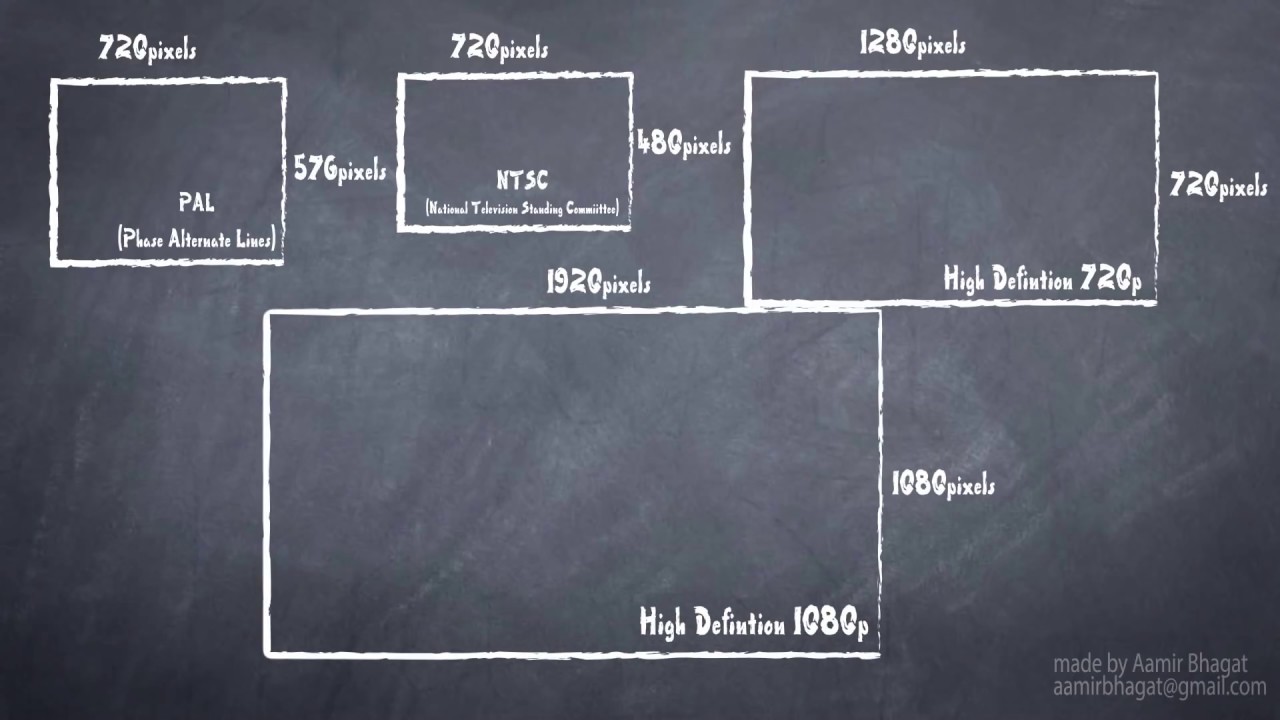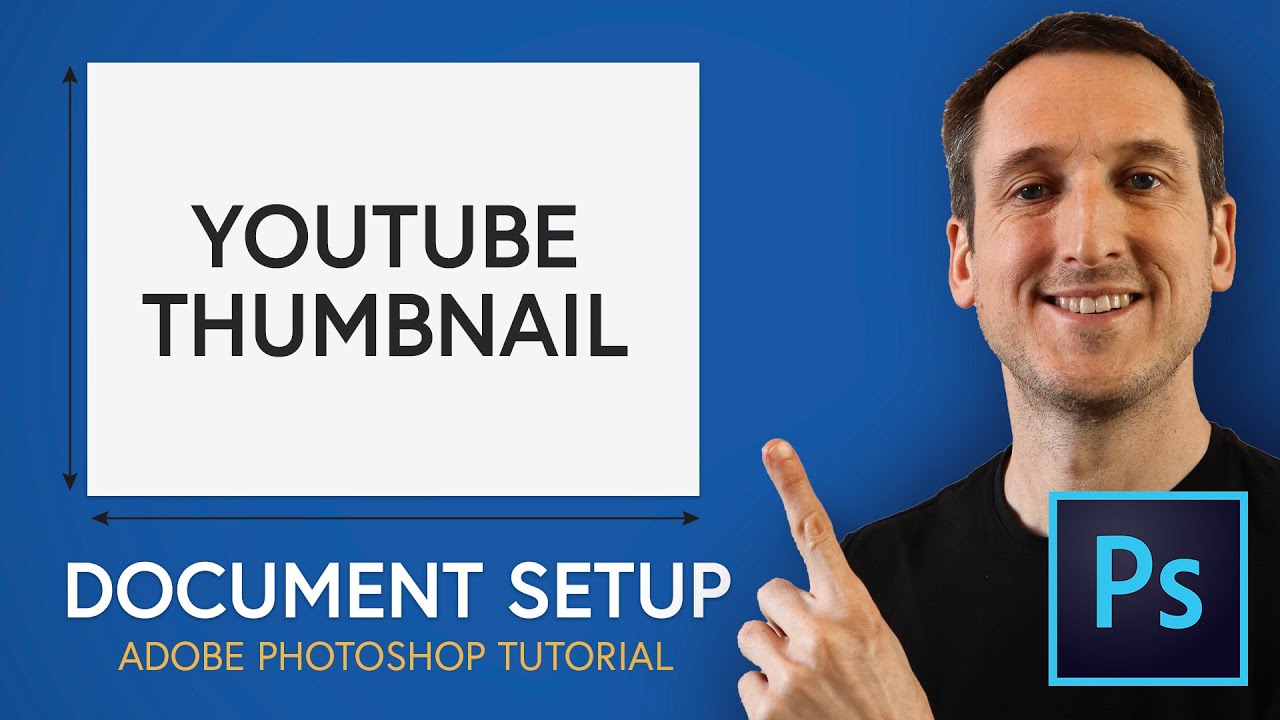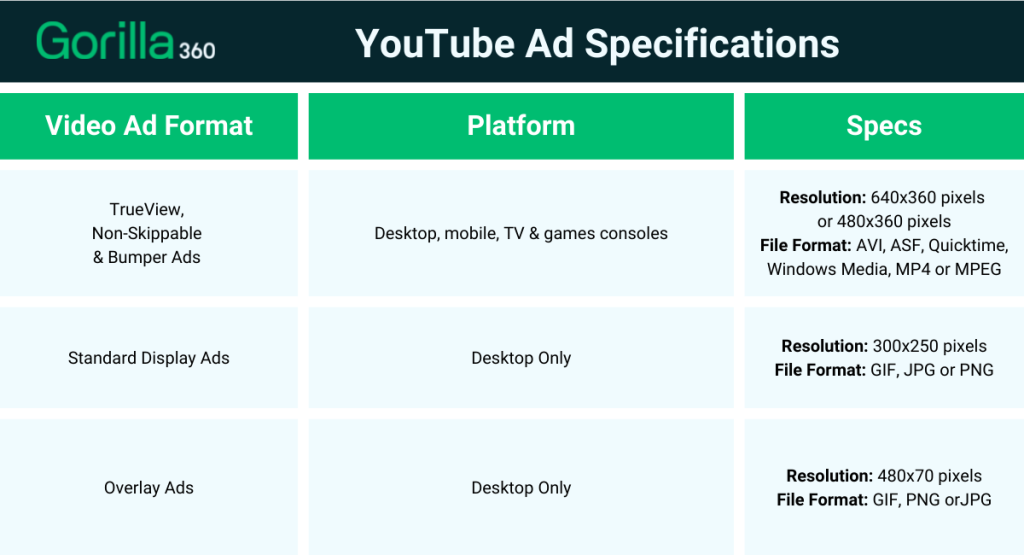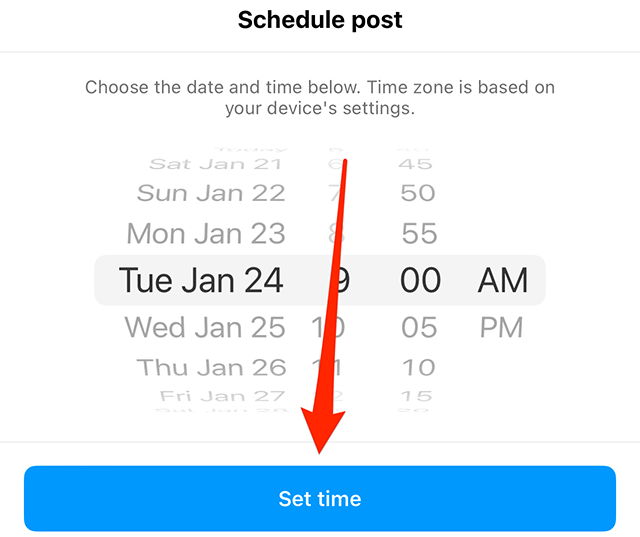The Ultimate Guide to YouTube Video Sizes

In today's digital landscape, video content has become an essential tool for businesses and creators to engage with their audience. YouTube, as the leading video-sharing platform, offers a vast array of opportunities for content creators to reach a global audience. However, one of the critical aspects of optimizing video content for YouTube is understanding the ideal video sizes and dimensions. In this comprehensive guide, we will delve into the world of YouTube video sizes, exploring the best practices, technical specifications, and real-world examples to help you create visually stunning and professionally crafted videos.
Understanding YouTube's Video Size Recommendations

When it comes to video sizes on YouTube, there are a few key specifications to consider. YouTube supports a wide range of video formats and resolutions, but certain standards are recommended to ensure optimal viewing quality and performance. Let's break down the essential guidelines for video size and resolution on YouTube.
Video Resolution: Striking the Right Balance
YouTube supports various video resolutions, from standard definition (SD) to high definition (HD) and even 4K ultra HD. The choice of resolution depends on the content, target audience, and the device on which the video will be viewed. Here's a breakdown of the common video resolutions and their ideal use cases:
| Resolution | Dimensions | Recommended Use |
|---|---|---|
| SD (Standard Definition) | 640 x 480 | Lightweight videos, mobile devices, low-bandwidth scenarios. |
| HD (High Definition) | 1280 x 720 | Most common resolution, suitable for a wide range of devices and screens. |
| Full HD (1080p) | 1920 x 1080 | High-quality videos, ideal for detailed content and larger screens. |
| 4K Ultra HD | 3840 x 2160 | Exceptional detail and clarity, perfect for showcasing visual masterpieces. |

It's important to note that YouTube dynamically adjusts video quality based on the viewer's connection speed and device capabilities. As such, it's recommended to upload videos in the highest possible resolution while considering the target audience's viewing environment.
Video Aspect Ratios: Finding the Perfect Fit
Video aspect ratio refers to the proportional relationship between the width and height of the video frame. YouTube supports a range of aspect ratios, with the most common being 16:9, which is the standard for HD and Full HD videos. Here's a closer look at the commonly used aspect ratios on YouTube:
- 16:9 (Widescreen): This is the most prevalent aspect ratio, offering a cinematic feel and maximizing the screen real estate on modern displays.
- 4:3 (Standard): Although less common, the 4:3 aspect ratio is still used for certain types of content, especially when preserving historical footage or maintaining a classic look.
- 1:1 (Square): Square videos are gaining popularity, particularly on social media platforms. They are well-suited for vertical viewing on mobile devices and offer a unique visual experience.
When choosing an aspect ratio, consider the intended platform and the nature of your content. While 16:9 is the standard for YouTube, experimenting with other aspect ratios can add a creative twist to your videos and cater to different viewing experiences.
Video File Formats: The Technical Considerations
YouTube supports a variety of video file formats, each with its own advantages and considerations. The choice of file format depends on factors such as video quality, file size, and compatibility with different devices and platforms. Here are some of the most common video file formats accepted by YouTube:
- MP4 (H.264): The most widely used format, offering excellent compression and high-quality video. MP4 files are highly compatible and widely supported across devices.
- WebM: An open-source format optimized for web delivery, providing efficient streaming and high-quality playback.
- MOV (QuickTime): Popular for its high-quality video and audio compression, often used in professional video production.
- FLV (Flash Video): Although less common, FLV is still supported by YouTube and can be useful for certain types of content.
When preparing your videos for YouTube, it's crucial to consider the file format's compatibility with different devices and browsers. Additionally, ensuring that your video files are properly compressed and optimized can significantly impact upload speed and video quality.
Best Practices for Creating YouTube-Optimized Videos

Now that we've covered the technical specifications, let's explore some best practices to ensure your videos shine on YouTube. These tips will help you create visually appealing, engaging, and professionally crafted content.
Composition and Framing: Telling a Story
The composition and framing of your video can greatly impact its visual appeal and storytelling ability. Here are some composition techniques to consider:
- Rule of Thirds: Divide your frame into a 3x3 grid, and place key elements along these lines or at their intersections to create a visually pleasing composition.
- Leading Lines: Use natural or artificial lines within the frame to guide the viewer's eye towards the subject or a specific point of interest.
- Framing and Depth: Experiment with foreground, middle ground, and background elements to create a sense of depth and draw attention to the subject.
- Symmetry and Balance: Achieve visual balance by symmetrically arranging elements within the frame or by intentionally breaking symmetry for a dynamic effect.
By paying attention to composition, you can create visually captivating videos that engage viewers and enhance the storytelling experience.
Video Encoding and Compression: Balancing Quality and Size
Video encoding and compression are crucial steps in the video production process. These techniques help reduce file size while maintaining video quality. Here's a look at some best practices:
- Constant Bitrate (CBR) vs. Variable Bitrate (VBR): CBR provides consistent quality throughout the video, while VBR adapts the bitrate based on the complexity of the scene. VBR is generally recommended for YouTube as it optimizes file size without compromising quality.
- Video Codec: Choose an efficient video codec like H.264 or HEVC (H.265) to ensure high-quality compression and playback across different devices.
- Audio Codec: Select an audio codec that matches the video codec for optimal synchronization and audio quality. AAC is a popular choice for YouTube.
- Video Bitrate: Adjust the video bitrate based on the resolution and content complexity. Higher bitrates result in better quality, but larger file sizes. Aim for a balance between quality and file size.
Properly encoding and compressing your videos not only improves upload times but also ensures that your content is delivered smoothly to viewers, regardless of their internet connection speed.
YouTube's Video Editor: A Powerful Tool for Enhancements
YouTube offers a robust video editor within its platform, providing creators with a range of tools to enhance their videos. From basic trimming and cropping to advanced editing features, the YouTube editor can be a valuable asset in your video production workflow. Here's a glimpse of what you can achieve:
- Trimming and Cutting: Remove unwanted sections, refine the pacing, and create a seamless narrative flow.
- Audio Adjustments: Enhance audio levels, apply audio effects, and ensure a consistent listening experience.
- Video Effects: Add transitions, filters, and overlays to create a visually appealing and professional look.
- Annotations and Captions: Insert text overlays, callouts, and captions to engage viewers and provide additional context.
- Color Grading: Adjust color balance, saturation, and contrast to enhance the visual aesthetics of your video.
While the YouTube editor is a powerful tool, it's important to note that advanced editing tasks may require specialized software like Adobe Premiere Pro or Final Cut Pro. However, for quick fixes and simple enhancements, the YouTube editor can be a time-saving solution.
Maximizing YouTube's Video Quality and Performance
To ensure your videos perform optimally on YouTube, it's essential to consider various factors beyond resolution and file format. Here are some key strategies to enhance video quality and overall performance.
Optimizing Video for Different Platforms
YouTube videos are often viewed on a variety of devices, from smartphones to laptops and smart TVs. To ensure a consistent viewing experience, it's crucial to optimize your videos for different platforms. Here's how:
- Mobile Optimization: Design your videos with mobile viewers in mind. Ensure that important elements are visible and that the content is easily consumable on smaller screens.
- TV Optimization: For videos intended for TV viewing, consider the larger screen real estate. Avoid placing critical information too close to the edges, and ensure that text and graphics are easily readable from a distance.
- Cross-Platform Consistency: Maintain a consistent visual style and branding across different platforms to create a cohesive viewing experience.
By optimizing your videos for different platforms, you can ensure that viewers have a seamless and enjoyable experience, regardless of the device they're using.
Video Thumbnails: The First Impression
A video's thumbnail is often the first point of contact with potential viewers. It plays a crucial role in attracting attention and enticing viewers to click. Here's how to make the most of your video thumbnails:
- Custom Thumbnails: Create custom thumbnails that are visually appealing and representative of your video's content. Use high-quality images and consider adding text overlays to convey key messages.
- Branding: Incorporate your brand's logo or color scheme into thumbnails to reinforce brand recognition and build trust with viewers.
- Consistency: Maintain a consistent thumbnail style across your videos to create a recognizable visual identity for your channel.
Well-designed thumbnails can significantly impact the click-through rate of your videos, so take the time to craft thumbnails that capture the essence of your content and entice viewers to explore more.
Video Annotations and End Screens: Engaging Viewers
YouTube provides powerful tools like annotations and end screens to enhance viewer engagement and retention. Here's how you can utilize these features effectively:
- Annotations: Use annotations to add interactive elements, such as call-to-action buttons, links to related content, or even interactive quizzes. Annotations can guide viewers through your video and encourage them to take action.
- End Screens: End screens are a great way to direct viewers to your other videos or playlists. You can also use them to promote your channel or provide additional information relevant to the video's topic.
- Call-to-Action (CTA): Include clear and compelling CTAs to encourage viewers to take the desired action, whether it's subscribing to your channel, liking the video, or visiting your website.
By strategically placing annotations and end screens, you can increase viewer engagement, drive subscriptions, and encourage further exploration of your channel's content.
Analyzing and Improving Video Performance
Understanding the performance of your videos is crucial for making informed decisions and optimizing your content strategy. YouTube provides a wealth of analytics data to help you analyze and improve your video performance. Here's how to make the most of YouTube's analytics features:
YouTube Analytics: Unlocking Insights
YouTube Analytics offers a comprehensive suite of tools to analyze various aspects of your video's performance. Here are some key metrics to track and analyze:
- View Count: Monitor the number of views your video receives over time. Track the growth or decline in views to identify trends and make adjustments to your content strategy.
- Audience Retention: Analyze how long viewers watch your video. A high retention rate indicates engaging content, while a low retention rate may suggest the need for improvements.
- Demographics: Understand your audience's age, gender, and geographic distribution. This data can help you tailor your content to specific demographics and make informed decisions about future video topics.
- Traffic Sources: Identify where your viewers are coming from. Are they finding your video through search results, recommendations, or external links? Understanding traffic sources can help optimize your SEO and promotion strategies.
By regularly reviewing and analyzing these metrics, you can gain valuable insights into your audience's preferences and behavior, allowing you to create more targeted and effective content.
A/B Testing: Refining Your Video Strategy
A/B testing is a powerful technique to compare different versions of your videos and determine which elements resonate best with your audience. Here's how you can implement A/B testing on YouTube:
- Video Variants: Create multiple versions of your video, varying factors such as the thumbnail, title, description, or even the content itself.
- Split Testing: Upload the different variants to YouTube and use the platform's built-in A/B testing feature to randomly show each variant to a portion of your audience.
- Analyze Results: Monitor the performance of each variant based on metrics like view count, engagement rate, and audience retention. The variant with the best performance indicates the preferred elements and can guide your future content decisions.
A/B testing allows you to make data-driven decisions and continuously refine your video strategy, ensuring that your content remains relevant and engaging to your audience.
Future Trends and Considerations

As technology advances and viewer preferences evolve, it's essential to stay updated with the latest trends and considerations in video content creation. Here's a glimpse into the future of YouTube video sizes and best practices.
The Rise of Vertical Videos
With the increasing popularity of mobile devices and social media platforms like Instagram and TikTok, vertical videos are becoming a prominent format. While YouTube primarily focuses on horizontal videos, incorporating vertical videos into your content strategy can cater to a wider audience and provide a unique viewing experience.
Adaptive Streaming and Dynamic Resolution
YouTube's adaptive streaming technology adjusts video quality based on the viewer's internet connection and device capabilities. This ensures a smooth and seamless viewing experience, regardless of the viewer's environment. As internet speeds continue to improve, adaptive streaming and dynamic resolution will play a crucial role in delivering high-quality videos to viewers.
360-Degree and VR Videos: Immersive Content
The future of video content lies in immersive experiences, and 360-degree and VR videos are at the forefront of this trend. These formats offer viewers a unique and interactive experience, allowing them to explore and engage with the content in a more personal way. While still relatively niche, these formats are gaining traction and providing new opportunities for content creators.
Conclusion
YouTube's vast reach and global audience make it an invaluable platform for content creators and businesses. By understanding the technical specifications, best practices, and future trends in video sizes and optimization, you can create visually stunning and engaging content that resonates with your audience. Remember, creating exceptional videos is a combination of technical expertise, creative storytelling, and a deep understanding of your audience's preferences.
As you embark on your YouTube journey, keep learning, experimenting, and refining your video production skills. With dedication and a keen eye for detail, you can elevate your content to new heights and captivate audiences around the world.
Frequently Asked Questions
What is the recommended video size for YouTube?
+The recommended video size for YouTube depends on various factors, including the intended audience, content type, and viewing environment. Generally, YouTube recommends uploading videos in HD (1280 x 720) or Full HD (1920 x 1080) resolutions. However, it’s essential to



